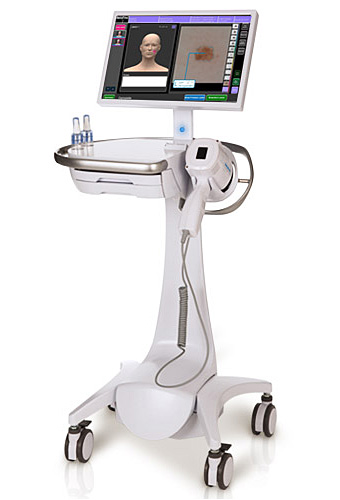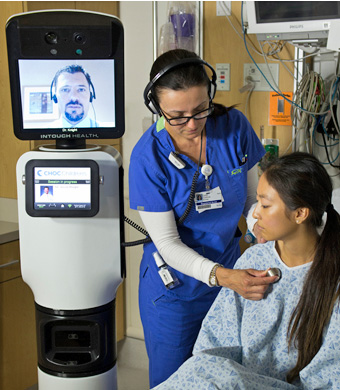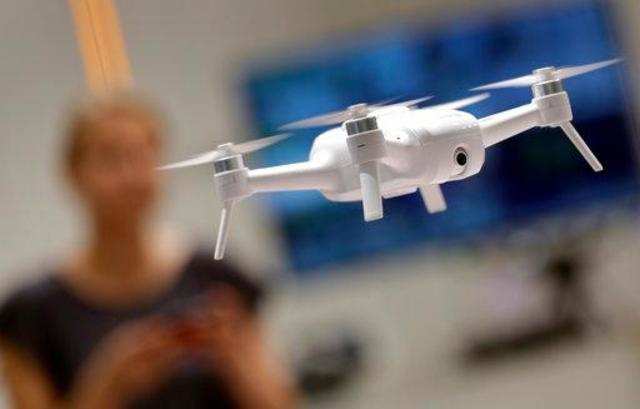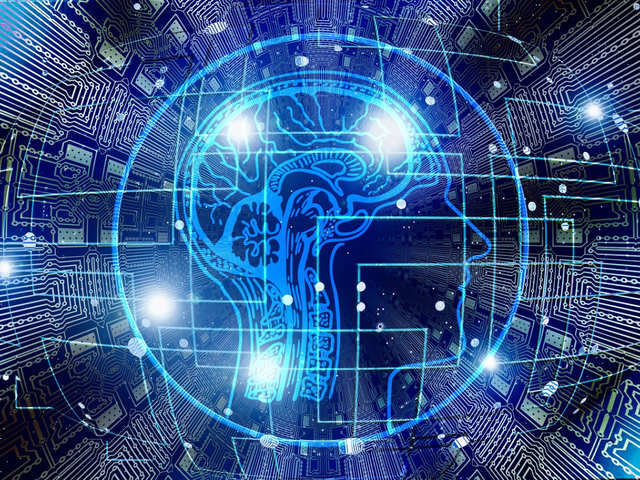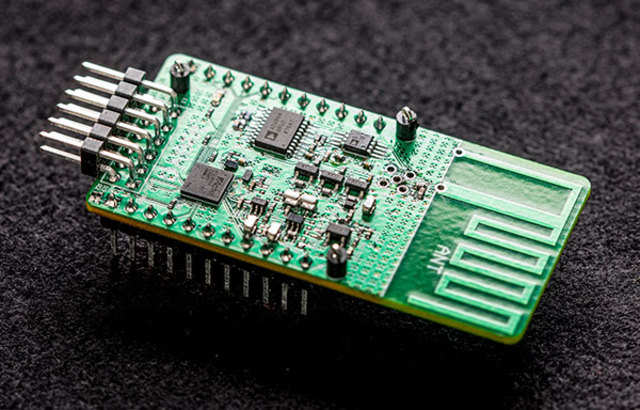As we near the end of the year, it becomes time for taking stock and
thinking about what the future will bring. Dimension Data’s technology
experts have shared their thoughts on the forces that will re-shape
digital business in 2018.
Top IT trends in 2018: Cybersecurity
Trend 1: ‘Zero trust’ security is making a comeback
In 2018, we can expect to see significant disruption in the
cybersecurity industry. Increasingly sophisticated cyberattacks are
forcing organisations to turn to the zero trust security model.
With this approach, the IT team adopts a mindset of ‘we don’t trust
anybody’. Only by explicitly allowing users to access systems can trust
be established.
A decade ago, the ‘zero trust’ approach implied that the IT team
could simply prohibit people from using non-corporate issued devices and
applications. However, the more modern ‘zero trust’ model will
accommodate individuals’ personal preferences.
However, it does mean that there’ll be more rigorous authentication
measures in place requiring users to verify their identities through
multiple layers of credentials. Enterprise systems will vigorously
authenticate whether users are indeed entitled access to specific sets
of data, before making them available.
To avoid bottlenecks and delays in getting tasks done, a cloud-based
system can be implemented. This will enable a near-instantaneous
authentication and verification process.
Re-examine policy and process
Organisations that embrace a ‘zero trust’ model will use it as an
opportunity to re-examine their cybersecurity policies and processes.
They’ll also increasingly turn to
managed security services
providers to augment their security monitoring and management
capabilities. This will allow them to focus on deriving maximum value
from their investments in security controls and resources, and ensure
that they’re being applied appropriately and effectively.
Trend 2: Deception technologies become the security enablers of IoT and OT
Operational technology (OT) is increasingly enabling the Internet of
Things (IoT) in industries such as automotive and manufacturing. But the
sensors attached to OT devices are introducing a new element of cyber
risk, and organisations are turning to deception technologies to raise
their defences.
Most manufacturers aren’t considering security in the development
phase of their products, and sensors are typically light-weight devices
with minimal storage capacity, which makes embedding encryption chips
into them unfeasible.
As a result, I predict that 2018 will see deception technologies
playing a significant role in maintaining security across the
supervisory control and data acquisition (SCADA) control system
architecture, OT, and wider IoT infrastructure.
How do deception technologies work?
Deception technologies introduce thousands of fake credentials onto
an organisation’s network, which makes it mathematically impossible for
cybercriminals to gain access to a legitimate set of user identities.
Once a cybercriminal has used a fake credential generated by
deception technologies, the security operations team receives an alert
that an unauthorised user is lurking on the network. They can then
immediately initiate incident response.
Deception technologies also allow organisations to determine exactly
how the cybercriminals gained access to the network, and to analyse
their subsequent pattern of attack.
Trend 3: Behavioural analytics and artificial intelligence demand a relook at identity
Thanks to a technique known as ‘deep learning’, the next 12-months
will see us take behavioural analytics and artificial intelligence to a
new level.
With deep learning, rather than providing a machine with algorithms,
you can enable it to learn by itself. The potential of this technology
was recently demonstrated when Google took the decision to turn off its
machine learning toolset. Through deep learning, the machines were
educating themselves to the extent that they had begun to create a new
language which system developers didn’t understand.
Using deep learning, machines will start undertaking highly granular analyses of users’ activities.
For example, by analysing my online behaviour over a period of time,
machines will be able to predict whether or not the person attempting to
access my data or applications is indeed me.
This provides organisations with an additional layer of defence over and above standard authentication methods.
In 2018, I expect to see more security vendors starting to integrate
artificial intelligence into their products to improve their ability to
detect cyberthreats in this manner.
Trend 4: Robo-hunters are the new norm
Most cybersecurity experts agree that it’s critical to have access to
threat intelligence about the latest types of attacks and tactics.
However, intelligence alone isn’t enough. Organisations must proactively
‘hunt down the enemy’.
In 2018, we’ll start seeing machines entering the enterprise. It’ll
be the kind that my colleague, Mark Thomas, Dimension Data’s Group
Cybersecurity Strategist, dubbed ‘robo-hunters’.
Automated threat-seekers
Essentially, robo-hunters are automated threat-seekers that can make
decisions on behalf of humans. Enabled by artificial intelligence, they
continuously scan an organisation’s environment for any changes that
might indicate a potential threat.
They learn from what they discover and then take appropriate action,
for example, by isolating a bad packet or compromised device.
I believe that the rise of robo-hunters will enable more businesses
to move from a proactive to a predictive security posture. Many of our
clients have invested in threat hunting personnel and capabilities and
Dimension Data is already offering it as a service. Those organisations
leading the charge are starting to look at ways to automate threat
hunting cycles and are conducting retrospective analysis to identify
patterns in historical incursions.
Trend 5: Blockchain is the disruptor
The opportunities and applications of Blockchain in the world of
cybersecurity are only just emerging. It has significant potential to
allow organisations to boost cybersecurity around user authentication
and identity and access management.
Blockchain allows a digital ledger of transactions to be created and
shared among participants via a distributed network of computers. The
system is highly accessible and transparent to all participants ─ all
transactions are publicly visible.
This means it’s possible for businesses to make Blockchain
‘corporately visible’ within their organisation so that they can see
every transaction that takes place.
The Blockchain ledger can detect suspicious online behaviour and
isolate the connection, giving the user restricted access until the
transactions have been sanctioned by system administrators or the IT
security team.
Essentially, Blockchain becomes the implementer of the ‘zero trust’ policy I mentioned earlier.
It also holds potential to assist in forensic investigations. For
example, an organisation that had confidential intellectual property
stolen can take their immutable ledger to court and prove that an
unauthorised person extracted or copied a set of data.
Top IT trends in 2018: Digital Business
Ettienne Reinecke, Chief Technology Officer, and Scott Gibson, Group
Executive, Digital Practice, share their thoughts on the forces that
will re-shape digital business in 2018.
Trend
1: Artificial intelligence, machine learning, robotics, and virtual and
augmented reality are delivering compelling and complementary outcomes
Artificial intelligence, machine learning, robotics, and virtual and
augmented reality aren’t new concepts. However, until now we’ve been
talking about it somewhat in isolation. Increasingly we’re seeing how
these technologies collectively have the potential to deliver disruptive
outcomes.
Let’s look at some examples: logistics giant, DHL, is successfully
using machine learning, artificial intelligence, and augmented reality
in its warehouse picking operations through the use of smart glasses.
The glasses place a display in front of the wearer’s eye, which
provides a visual display of order picking instructions, the exact
location of the goods in the warehouse, and where they should be placed
on the cart. This has resulted in massive improvements in employee
productivity and in accuracy of deliveries.
Use cases for augmented reality are moving into the consumer space.
Air New Zealand is currently trialling a solution to improve how they
serve their passengers.
As flight attendants walk down the aisle wearing augmented reality
glasses, they immediately know each passenger’s details – how many miles
they’ve flown, what their meal preferences are, and where their final
destination is – all of which enhance their ability to provide a more
personalised service.
Roaming robots
The true promise of robotics is starting to manifest. In the US, San
Jose's Orchard Supply Hardware is using machine learning with robots
connected to their inventory systems.
When you enter the store, you can walk up to the robot and
communicate with it in normal language. The robot knows exactly where
the items that you’re looking for are located and will escort you to the
relevant aisle. It’s also 100% up to date with what goods the store
currently has in stock.
Trend 2: Lack of programmability is hindering businesses’ ability to deliver on the potential of hybrid IT
We believe that organisations haven’t made as much progress as they’d
like to in optimising their hybrid IT environments, partly due to
limitations in their ability to leverage programmable technology.
In 2018, both applications and infrastructure will continue to become
more programmable, but the pace needs to pick up. Why? Programmability
delivers business benefits, such as reducing cost and human error that
are too compelling to ignore.
We anticipate that infrastructure vendors that haven’t made their
wares sufficiently programmable are going to see their market share
being significantly eroded in 2018.
Automated managed services: a must-have
The traditional outsource managed services model is gone. Today,
organisations expect an automated service managed from the cloud in a
hybrid IT environment.
Companies don’t want to worry about whether technology resides on
their existing on-premise equipment, on a provider’s cloud, or on a
hyperscale cloud, or all of the above. They just want to consume it the
way they want to, in a fully automated way.
Trend 3: Decentralised transaction models are breathing new life into cybersecurity and the Internet of Things (IoT)
Over the last year, blockchain has gone from strength to strength. In
the financial services sector, we saw both the US and European capital
markets moving onto Blockchain platforms in a large way, with similar
activity in more conservative markets like Japan. Considering how
conservative and compliance-focused this sector is, that’s quite
remarkable.
Many people found it quite ironic that the cybercriminals that perpetrated the recent WannaCry
ransomware attack could hold a federal government to ransom and demand to be paid in Bitcoin.
Bitcoin might be a crypto-currency, but as it’s based on blockchain,
it’s an interesting use case. The fact that the cybercriminals ─ who
invest a lot more in cybercrime than most companies do in
cyberprotection ─ are confident that bitcoin provides a safe mechanism
(i.e. its blockchain foundation) for the payment of ransoms, should give
us an idea of just how secure the distributed ledger approach is.
We believe that blockchain has the potential to totally re-engineer
cybersecurity, but that the industry has yet come to terms with it.
With a distributed ledger, cybercriminals don’t have a central
database to attack. With an encrypted ledger distributed across numerous
computers, all validating one another, where’s the perimeter? It’s an
inherently more secure architecture.
Blockchain will deliver on the promise of IoT
In the year ahead, we believe that the potential for blockchain to
deliver on the promise of IoT will become better understood because IoT
requires a peer-to-peer mechanism to be practical and executable.
In the world of IoT you’re generating millions of small transactions collected from a distributed set of sensors.
It’s not feasible to operate these systems using a centralised
transactional model, because it’s too slow, expensive, and exclusive.
Once a sensor alert is received from a control system you have to be
able to react to it, meter it, and bill for it instantly – all of which
negates the viability of a centralised transactional authority.
We also expect to see interesting applications of Blockchain and IoT in the area of cybersecurity in the year ahead.
Trend 4: Surge in interest in software-defined wide area networks (WANs) while wireless is set to boom
In 2018, we expect to see recently released software-defined WAN
technology gaining significant adoption. Some 40% of businesses across
the globe will start to deploy software-defined wide area networks – up
from just 2% in 2016.
This technology allows you to automate decisions, establish more
granular sensitivity to the application and determine how best traffic
should be handled. It can even adjust virtual architectures to match
workloads or conditions in real-time.
The technology also allows for more informed decision-making about
how to use either broad-based Internet or your own costlier, but more
robust, traditional MPLS-based networks, thereby enabling a better
cost/performance balance.
Wireless wins
In 2018, we can also look forward to a boom in new wireless
technologies enabling IoT, which brings us a step closer to the dream of
pervasive connectivity. Some of these advancements will include 5G and
Gbps Wi-Fi, new controls, virtual beacon technology, and low-power,
long-distance radio frequency.
Wireless is rapidly becoming pervasive in the enterprise, and even in
larger spaces, such as campuses and shopping areas. More intelligent
Wi-Fi providing application hooks simplifies the collection of rich
control and metadata that drive applications and analytics, and impacts
business processes.
We’ll start seeing more wireless-enabled processes. This technology
can truly link the user to the application, and to the business process,
leading to optimisation and new business model opportunities.
We also believe that networks, particularly on the edge, will become
more intelligent especially when analytics becomes a stronger focus.
Trend 5: Only organisations with the correct architectures and data structures will achieve digital supremacy
To achieve digital supremacy, organisations need to ensure that their basic architectures and data structures are in place.
Most will need a partner to help them get the basics right. Systems
integration skills are key for incumbents hoping to compete effectively
against new market entrants. A systems integrator can help you determine
how to extract value from your legacy environment.
We also expect to see businesses increasingly seeking out a new genre
of consulting and advisory services. In the past, businesses would look
for advice on how to improve specific technology towers.
Today the conversations are quite different. Organisations are
saying: ‘I want to move to digital, but how do I get there from here,
quickly? Be very precise ─ I want to know what I should do this week,
not what I should do in two years’ time. Which of all these moving parts
should I look at first ─ operating profit improvements, cash flow,
client experience, or my supply chain?’
The digital fight-back against disruptors
We’re seeing increasing numbers of cloud-born start-ups starting to be disrupted in certain industries.
We believe that established organisations that have proactively
transformed into digital businesses, modernised their architectures, and
embedded high levels of automation into their operations have a window
of opportunity in the year ahead to claw back market share.
Top IT trends in 2018: Digital Infrastructure
The following digital infrastructure trends are insightful
predictions provided by Kevin Leahy, Group SVP, Data Centre Business
Unit.
Trend 1: Speed trumps cost
In today’s world of digital disruption, every business perceives
itself as being under threat, and, as a result, most are making a
conscious decision to choose speed over cost.
Organisations will enable acceleration in the following ways:
- IT leaders will intensify their efforts to identify and eliminate the inhibitors of speed.
- We’ll see enterprise IT leaders moving away from lengthy,
in-depth total cost of ownership analyses and instead choosing the
technology or platform that they can leverage the fastest.
- Organisations will identify the technologies and platforms that
will deliver the business outcome they need at the required speed.
We’ll also see more businesses exploiting
software-defined networking
and network virtualisation across the network in the data centre,
hybrid WAN, and the campus as part of their efforts to transform their
networks.
Balancing act
These choices have to be made while taking into account the
constraints of the organisation, like their own corporate policies,
industry rules, and data privacy laws. They’ll also need to factor in
the location of their users.
Ultimately, the challenge for organisations in 2018 will be to strike
a balance between investment, technology, and governance rules, and
their ability to execute at speed.
Trend 2: Leveraging tools that support innovation and differentiation is critical
In 2018, businesses need to embrace innovation by leveraging new
tools that enable their developers to create new sources of competitive
differentiation.
Developers need access to new tools and the flexibility to create
business models. They have to be able to support new application types,
using modern development and deployment tools, particularly in the area
of containerisation.
Considering the pace of innovation in
containers,
I predict organisations that aggressively embrace these tools and make
it available to their development teams will be winners. And those that
fail to act will see their competitive edge being eroded.
Exploit the SaaS evolution – so you can focus on what differentiates you
Increasingly, we’ll see businesses that are successfully accelerating
their digital transformation focusing on using SaaS for
non-differentiating processes. This will allow them to reap the benefit
of the continuous SaaS industry revolution, and the economies of scale
and standardisation that these products afford them.
Using SaaS to ensure that their non-core focus areas are running
optimally will enable organisations to focus their resources on creating
and evolving their differentiation capability elsewhere – for example,
in their manufacturing or CRM environments, or in the development of
custom customer-facing applications.
Trend 3: The rise of the API economy
Increasingly, businesses are recognising the importance of APIs as an
enabler to develop revenue-generating applications and services. This
evolution has been dubbed ‘the rise of the API economy’.
In 2018, I predict that organisations will start to see the wisdom in
standardising on a set of APIs. We’ll see IT decision-makers move away
from evaluating tools, technologies, and services purely on the basis of
their features and capabilities.
The API’s maturity and availability, and how easily it allows the
implementation of processes, rather than performance will become more
important. Increasingly, businesses are looking to exploit the
software-driven nature of these environments.
It’s all about abstraction
In the year ahead, businesses will be challenged to keep up with the
pace of change of APIs. They’ll need to ensure that they can invest in
relevant programming to drive their business objectives.
The type and number of APIs that organisations select will depend on
several factors, including the extent to which they want or need to
abstract away the underlying technologies.
Trend 4: Shifting focus from technologies to services architectures
In 2018, in addition to investing in the appropriate APIs to enable
abstraction, businesses will need to revisit their architectures and
ensure that they’re fit-for-purpose and future-proof.
There’s a clear acceptance in the industry that
hybrid IT
is the model of the future. However, hybrid IT has significant
architectural implications which organisations will need to address.
Over the last decade, IT teams have focused much of their energies on
technology integration. The advent of hybrid IT has changed the
paradigm:
mastering hybrid IT
requires you to instead focus on services integration. Most
organisations’ existing architectures were not built with this theme in
mind.
Composition of services
It’s important to determine which services must co-ordinate with
others and how they all need work together to deliver the business
outcome and a positive user experience.
If you attempt to bring together different services components
without first implementing the appropriate architecture, you run the
risk of delivering a poor, inconsistent user experience. As the services
start to become more complex, your ability to scale it and deliver with
quality, will be limited.
Trend 5: Push to manage the business value of data
In 2018, there’ll be an intensified focus on exploiting the value of
data, and ensuring that it’s provided to those who need it, when they
need it – this a truly data-centric view of IT.
The advent of all-flash storage means that there’s less need for
organisations to be concerned about different storage types and tiers.
In addition, today you can architect so that cost is not an issue, by
moving to an all-flash option to make your business faster.
What’s more important is the fact that as organisations transform
into digital business, the role of data is taking on greater
significance. Now, the emphasis is on finding new value in your data –
and being able to leverage the value of that data faster.
At the 2017
Tour de France,
our data analytics platform incorporated machine learning and complex
algorithms to combine live and historical race data. This provided
deeper levels of insight during the 23-day event. It also provided
cycling fans with a better understanding about the environments and
circumstances in which riders perform best.
This is a good example of how the Internet of Things is enabling
organisations to find new sources of data and to extract new value from
it.
Trend 6: Programmable infrastructure everywhere
In recent years, developers’ focus has been on the level of computing
requirements they anticipated they’d need, rather than networking and
security considerations. Thanks to the advent of programmable data
centre infrastructure, this will change in 2018.
We’ll see more businesses considering network and security
requirements in the development phase. We’ll also see them programming
their applications to take advantage of software-defined infrastructure.
Network and security services that enable you to move and protect
your data can be provisioned to provide on-demand connectivity and
security as applications flex, based on changes in business
requirements. Infrastructure becomes a ‘living and breathing’ entity
that enables the notion of digital business to become a reality.
The technology will allow organisations to challenge their
infrastructure status-quo and rethink basic principles using
flexibility, programmability and software-defined as cornerstones. This
technology transformation could be used as a lever to unlock operational
transformation, and in some cases, financial transformation through
emerging IT consumption models.
Top IT trends in 2018: Hybrid Cloud
The following hybrid cloud trends are insightful predictions provided
by Dan Greengarten, SVP, Sales, Cloud Services, and Alliances.
Trend 1: Transforming customer experiences and targeted business outcomes with the Internet of Things (IoT)
For IoT to deliver real business value, I believe it’s critical that
organisations stop thinking about it as simply a collection of connected
sensors and devices.
Companies focused on the business outcomes from the start of the
project see real value as a result of their efforts. Organisations
trying to solve many disparate business problems find that their lack of
focus is less likely to lead to success.
Focus on business objectives at the outset
A key example of how the focus on key business objectives delivers real value is our work with
Tour de France organisers, Amaury Sport Organisation (A.S.O.). From the outset, A.S.O. focused on
bringing the race into the digital era.
Their objective was to embrace the benefits of digital technologies and
leverage it to protect broadcasting rights and open up new revenue
streams.
The core of the solution is IoT: attaching GPS devices to every bike
in the race peloton and relaying the location data back to a central
location. However, the business value isn’t achieved from the devices
alone. The value to A.S.O. derives is from services that turn raw data
into information that the fans can use to better understand the
challenges, tactics, and race strategy.
Trend 2: Hybrid cloud cost containment is a pervasive issue
Three to four years ago, many organisations made the decision to move
a significant portion of their infrastructure, and anything new, into
the public cloud. They assumed that this would enable them to drive out
costs and reduce both operational complexity and headcount.
Today, many businesses have realised that few or none of these objectives have been met.
Cost containment strategy
In the next 12 months, we’ll see businesses carefully assessing the
return on investment delivered by ‘generation 1’ cloud projects. They’ll
also reduce and / or review their consumption-based opex budgets in
favour of what could be developed in-house, this time using more
intelligent tools. Rather than continuing to consume public cloud, many
organisations will consider building private clouds.
Trend 3: Increasing understanding of the platform economy
Digital marketplaces are changing the face of business. Organisations
will recognise the true potential of the platform economy, and begin to
realise its impact on their operating models.
As more businesses shift to a ‘digital front end’, revenue-generating
digital assets demand fundamental changes in organisational operating
models. Running a digital business with platform-based services differs
from traditional operating models.
A new risk paradigm
In the platform economy, the risk shifts from the consumer to the provider.
Businesses that operate platforms need to make significant upfront
investments to build their platforms – before they receive any revenue.
They need to change their commercial and pricing models to factor in new
risks.
In the platform economy, sales cycles can be longer and generate less
upfront fees. Organisations therefore need to think about how they
manage cash flow fluctuations and how they remunerate their sales force.
Trend 4: Hybrid cloud solutions are becoming verticalised
Throughout 2018, we’ll see more vertical cloud solutions on the
market. Smaller cloud providers are looking for ways to differentiate
from the hyperscalers. They’ve realised that they need to find new ways
to drive scale and grow market share via a deep vertical focus.
In the year ahead we can expect to see these smaller players
investing significantly in industry-specific compliance regimes for
different verticals to build credibility with their target market.
Comprehensive solutions for the entire XaaS stack
The result will be hybrid cloud offerings that span the entire
spectrum of the XaaS stack and deliver a comprehensive solution for
specific verticals.
These solutions will cover everything from the infrastructure layer,
to platform tools that customers’ development teams can use to build new
services without the fear of any compliance breaches, to applications
delivering the service.
Trend 5: The rise of hybrid cloud management solutions
Businesses will continue to commit to multi-cloud architectures, both
public and private, and from several different providers. While there
are significant benefits to this approach, it can result in greater
management complexity.
As a result, businesses are recognising the importance of having a
defined set of management tools to run operations, and we can expect to
see an increase in demand for hybrid cloud management solutions.
Standardising services
Specifically, organisations will invest in hybrid cloud management solutions allowing standard services to be created.
Businesses use cloud to deliver services to their internal users
and/or their external customer base. If they’re operating a platform
they need to standardise various components to deliver a particular
offer. Hybrid cloud management tools allow this.
Trend 6: Industry skills and talent pool continue to shrink
The talent pool of people available to help organisations architect,
implement, and operate hybrid cloud solutions will continue to shrink.
This shortage of skills will generate new opportunities for
managed services providers
that can deliver highly automated services. Why is automation so
critical? The more a service provider can automate elements of a
client’s IT environment, the lower the costs to deliver the service and
the subsequent cost to go to market.
This also benefits the client. By delivering services to customers in
a more automated manner, the costs of providing it is also reduced and
it can be offered at a lower price-point.
Software development becomes the new ‘trade’
Software engineering will become the essential trade of the 2020s.
In 2018, we’ll start to see this manifesting in a war for talent.
There’ll be a significant spike in demand for software development
talent graduating from tertiary institutions, as organisations seek the
skills required to build digital front-ends.
Trend
7: Expectation for service providers to deliver a unified, embedded
cybersecurity posture ─ across all platforms and services
Organisations that appoint service providers to take on the
management of their hybrid, multiple, dispersed, and potentially
unrelated IT platforms, will expect them to enable a security posture
that spans the entire platform.
Built in, not bolted on
Organisations will expect their service providers to offer robust
security measures that cover on-premise and cloud-based assets, the
network, and applications ─ all built into an intelligent security core.
In evaluating service providers, businesses should consider their
capability to provide a holistic approach to cybersecurity and to
identify threats and risks across multi-faceted, distributed
architectures, including on-premise, cloud, and hybrid environments.
Top IT trends in 2018: Digital Workplaces
Joe Manuele, Group Executive, Customer Experience and Workplace
Productivity; Alex Bennett, Customer Experience and Workplace
Productivity Practice-lead: Productivity; and Dino Marasco: Customer
Experience and Workplace Productivity: Go-to-Market Lead; share their
thoughts on the top digital workplace trends in the year ahead.
Trend 1: Artificial intelligence driving voice-enabled virtual assistants in the enterprise
Artificial intelligence-driven virtual assistants such as Amazon’s
Alexa, Apple's Siri, and Microsoft’s Cortana have been around for some
time in the consumer world. These voice-activated helpers assist us to
find information, and carry out a range of everyday tasks on our behalf.
These virtual assistants are now starting to make their way into the workplace. According to our recently published
Digital Workplace Report, 62% of organisations expect virtual assistants to have a place in their companies in the next two years.
Voice is cool again
Because these virtual assistants are voice-enabled, they allow us to
get things done much faster ─ you don’t have to log onto your computer
and then onto some sort of system or application using a username and
password to complete a task.
Imagine you wake up on a Monday morning, ready to tackle your working
week. Your first meeting is only at 10:00 am, so you decide to spend an
hour or so in your home office. One of the items on your list is to
approve an employee’s expense claim. You simply say: ‘Cortana, please
approve Mike’s expenses’ – and it’s done.
Just before setting off to the office, you ask Cortana to scan the
traffic newsfeeds to check for any disruptions along your normal route,
and if so, recommend the best alternative. If necessary, using automated
messaging integrated into Microsoft Exchange, Cortana could also inform
the colleagues who you’re meeting at 10:00 am that you may be late, or
need to reschedule.
Trend 2: Smart buildings are evolving into smart workplaces
In 2018, we expect to see smart buildings evolving into what we call ‘smart workplaces’.
For example, by leveraging the Internet of Things, artificial
intelligence, machine learning, and wireless virtual beacon technology,
property owners can track which parts of a building have the greatest
footfall and attach a higher rental price tag to those areas. They can
even use data collected by sensors to negotiate new contracts with their
office cleaning providers, based on the amount of dirt that accumulates
in different areas.
Let’s return to your Monday morning arrival at the office to explore
some of the other smart workplace innovations that we can look forward
to in the year ahead…
As you enter your office parking garage, a smart parking system
allocates you to a bay as close as possible to where your meeting is
located. On entering the building, a biometric identity verification
system, using a combination of voice and facial recognition, grants you
access to the reception area.
Next, what’s known as ‘ambient artificial intelligence’ kicks in. The
digital signage in the passageways identifies who you are and where you
need to go and directs you to your meeting room.
By integrating with identity solutions such as Microsoft Active
Directory and using voice and facial recognition, the room senses your
arrival, and immediately brings the other attendees into the meeting via
video. A smart board automatically shows the notes you’ve made during a
meeting held the previous week. The lights dim, the blinds close, and
your meeting begins.
Trend 3: Support of major vendors is driving adoption of Web real-time communication (RTC)
While Web RTC has been around for some time, we expect to see an
increase in its adoption in 2018 because Apple and Microsoft ─ whose
browsers are the most popular ─ are embracing the technology.
Web RTC allows you to enable a video meeting using only a web
browser. You don’t need a client on your desktop, and attendees don’t
need to worry about finding meeting call-in numbers and passwords.
Everyone simply clicks on a link and joins the meeting via their
respective browsers.
Web RTC will also provide new ways for organisations to communicate
with and support their customers, driving greater levels of customer
experience.
Trend 4: Video becomes the defacto
Video is becoming mainstream to the point where organisations are
re-defining their workplaces to make it more collaborative and
supportive of video.
Traditional workplaces typically include offices, cubicles, and
meeting rooms. Increasingly we’re seeing a shift to workplaces that
comprise of more shared spaces, commonly known as activity-based
working. This could include huddle rooms and other small office spaces
where people can collaborate and have video conferences.
Network considerations
While video is good for productivity, you need to consider the impact
on the network. If you start video-enabling all your users and Web RTC
becomes the primary way to communicate and collaborate, your supporting
digital infrastructure needs to be able to cope.
Trend 5: From BYOD to BYOA ─ the next wave of individual empowerment
Next on your Monday afternoon agenda is a catch up with Sanjay, a
20-something data analyst on your team, who’s based in India. This
meeting takes the form of a video-enabled WhatsApp call from a hot desk.
When Sanjay joined the organisation, he quickly expressed his
frustration with internally provided tools and requested that you rather
meet via FaceTime or WhatsApp. He’s also sourced his own powerful data
visualisation software to enable him to quickly ‘slice and dice’ data
and conduct in-depth analysis, rather than rely on spreadsheets.
This scenario is indicative of a trend that we believe we’ll start to
see accelerating in 2018. Individuals are increasingly asserting their
desire to communicate and collaborate however they want, using their
choice of tools. Employees ─ particularly millennials don’t just prefer
to use their own devices, they also want to use their own applications.
This is a trend that’s been dubbed ‘bring your own app’ or BYOA.
What’s the impact on the IT team?
BYOA means that what IT needs to deliver to the business is going to change.
IT teams shouldn’t deploy technology just for the sake of it. They
should firstly focus on understanding what a functional team or employee
needs to perform their particular tasks and ensure that they feel
empowered to use it, while following regulatory and compliance
requirements.
IT’s metrics will also need to change. It’s no longer just about
keeping track of uptime of the environment. Integrated business outcome
KPIs are required regarding adoption, usage, pipeline increase, and
speed of sale so that, for example, you can demonstrate that the
productivity platform deployed is increasing sales.
Monday’s been a productive but tiring day so you decide to head home.
As you approach your apartment, you turn your thoughts to the evening
ahead. You decide that a quiet night in with a pizza and a Netflix movie
is just what you need – all arranged by your virtual assistant of
course!






